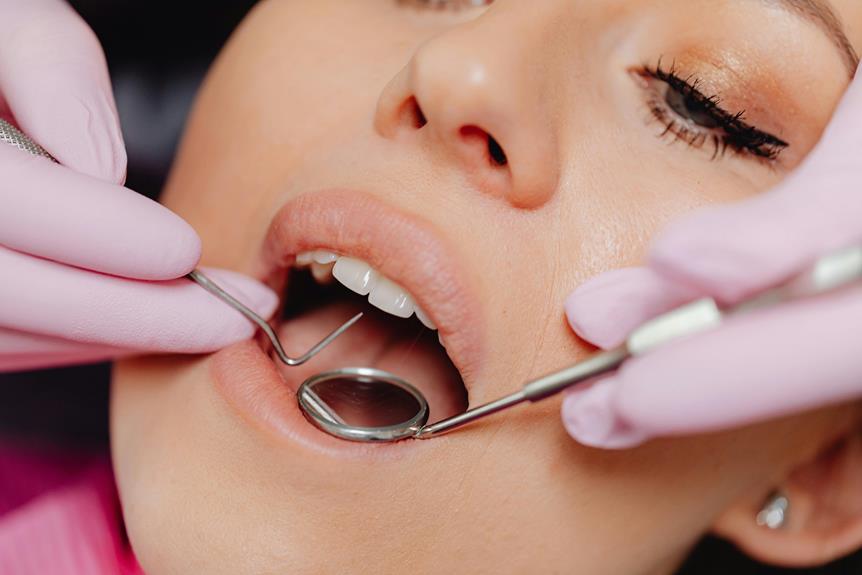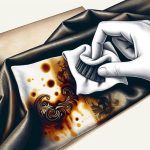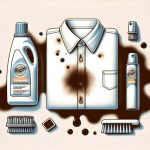You might think all stains are created equal, but that's far from the truth. Each type demands a unique approach for effective removal, and understanding the science behind stains can save your favorite fabrics from irreversible damage. It's not just about what you use, but how and when you apply it. So, what's the best way to tackle those stubborn marks? Let's explore the nuances of stain treatment and uncover the common mistakes that could be making your situation worse.
Table of Contents
Key Takeaways
- Identify the stain type (oil, protein, dye) for effective treatment tailored to its composition.
- Always blot stains gently with a clean cloth instead of rubbing to avoid spreading.
- Rinse stained areas with cold water first; hot water can set certain stains permanently.
- Test cleaning solutions on inconspicuous areas to prevent fabric discoloration or damage.
The Science of Stains
Stains are complex mixtures of substances that bond with fabrics, making them tricky to remove without understanding their chemistry. When a stain occurs, it typically involves pigments, oils, or proteins that cling to the fibers. Each type of stain has a unique composition, which affects how it interacts with your fabric. For instance, greasy stains from food require different treatment compared to protein-based stains like blood or sweat.
To tackle stains effectively, you need to identify their source. Water-soluble stains, like coffee or juice, can often be treated with cold water and a mild detergent. On the other hand, oil-based stains, such as butter or salad dressing, may need a solvent-based cleaner to break down the grease.
Temperature plays a crucial role too. Hot water can set some stains, particularly protein stains, so it's best to start with cold or lukewarm water. Additionally, using the right tools, like soft brushes or cloths, helps lift the stain without damaging the fabric.
Common Stain Myths Debunked
Understanding the science of stains can help you distinguish between fact and fiction when it comes to common stain removal myths. Many people believe these myths, leading to ineffective or damaging cleaning practices. Let's set the record straight.
| Myth | Truth | Impact of Belief |
|---|---|---|
| Hot water removes all stains | Hot water can set protein stains | Might worsen the stain |
| Rubbing stains makes them disappear | Rubbing can spread the stain | Can create a larger stain |
| Vinegar works for all stains | Vinegar can damage certain fabrics | May ruin your clothing |
| Salt can fix red wine stains | Salt can actually worsen the stain | Could lead to permanent marks |
Stain Treatment Basics
When you encounter a stain, it's crucial to act quickly to increase your chances of successful removal. Delaying can let the stain set, making it harder to treat.
Here are some basic steps to follow when treating stains:
- Blot, don't rub: Gently blot the stain with a clean cloth to soak up any excess liquid. Rubbing can spread the stain and damage the fabric.
- Identify the stain type: Knowing whether it's oil-based, protein-based, or dye-based can help you choose the right cleaning method.
- Use cold water: Rinse the stained area with cold water first. Hot water can set certain stains, especially protein-based ones like blood or dairy.
Specific Stain Removal Techniques
Knowing the type of stain you've got allows you to choose the most effective removal technique for your specific situation.
For grease stains, sprinkle baking soda on the area to absorb the oil before gently scrubbing with dish soap and warm water. Rinse thoroughly.
If you're dealing with a red wine stain, blot it immediately with a clean cloth, then sprinkle salt to absorb the liquid. After a few minutes, rinse with cold water and apply a mixture of hydrogen peroxide and dish soap.
For ink stains, place a paper towel underneath the fabric, then dab rubbing alcohol on the stain. The ink will transfer to the towel. Rinse with cold water afterward.
If you encounter a blood stain, use cold water to blot the area, then apply a paste of baking soda and water. Let it sit before rinsing.
For grass stains, rub a mixture of dish soap and white vinegar directly onto the stain, then wash as usual.
Always remember to test any cleaning solution on a small, inconspicuous area first.
With these techniques, you'll tackle stains effectively and keep your fabrics looking their best.
Preventing Future Stains
To keep stains at bay, it's essential to take preventive measures before spills occur. By being proactive, you can protect your fabrics and surfaces from unwanted marks. Here are some effective strategies you can implement:
- Use stain-resistant fabrics: Opt for materials treated to repel liquids, like microfiber or polyester blends, especially for high-traffic areas.
- Apply protective sprays: Consider using fabric protectors on upholstery and carpets. They create a barrier against stains and can be reapplied as needed.
- Establish a no-shoes policy: Encourage guests to remove their shoes upon entering your home. This reduces dirt and potential stains from outside.
Frequently Asked Questions
Can Stains Be Removed From All Types of Fabrics?
Not all stains can be removed from every fabric type. While some materials respond well to treatments, others may absorb stains or be damaged by cleaning methods. Always check fabric care instructions before attempting to remove stains.
How Do Environmental Factors Affect Stain Removal?
Environmental factors like temperature, humidity, and sunlight significantly affect stain removal. Higher temperatures can help dissolve stains faster, while humidity may promote mold growth. You'll need to adjust your cleaning methods based on these conditions.
Are There Home Remedies That Can Be Harmful?
Yes, some home remedies can be harmful. You might discover that using vinegar on certain fabrics can damage them, or baking soda can scratch surfaces. Always test on a small area first before applying widely.
Should I Treat Stains Immediately or Let Them Sit?
You should treat stains immediately whenever possible. Waiting can allow them to set, making removal much harder. Act quickly, and use the right method for the specific stain to enhance your chances of success.
What Tools Are Essential for Effective Stain Removal?
You'll need a few essential tools for effective stain removal: absorbent cloths, a stain remover solution, a soft brush, and a bucket of warm water. These will help you tackle stains quickly and efficiently.







